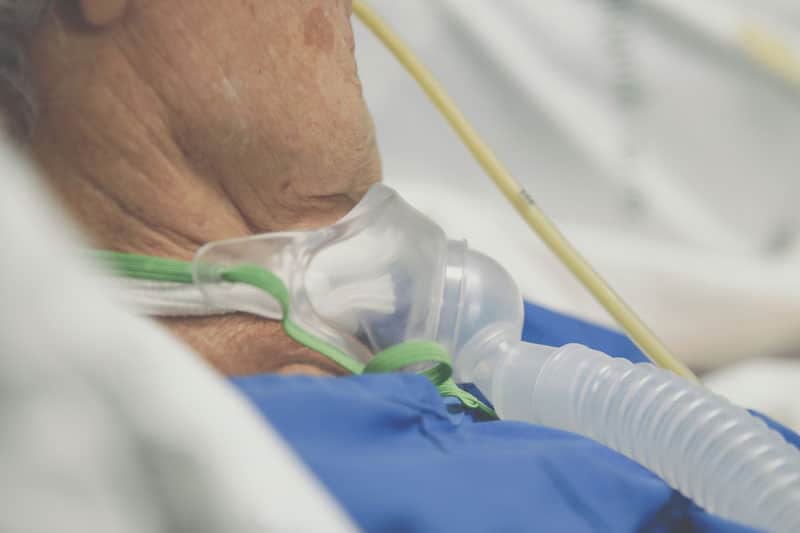After a tracheotomy procedure, many patients need skilled nursing care and dedicated support to help them avoid complications. Common nursing duties include tracheostomy care provided in hospital settings, intensive care units or skilled nursing facilities that offer specialized respiratory care. Here are some guidelines and procedures involved with trach care and promoting healing after surgery.

Caring for Tracheostomy Patients
A tracheotomy is performed to create an airway directly from the throat to the lungs that bypasses the mouth and nose. This procedure is often necessary for people who suffer from long-term respiratory conditions, injuries to the neck, larynx or mouth, tumors in the neck, airway birth defects and anaphylaxis. Also, trachs are often done in emergencies to help a patient get air in critical situations.
The resulting airway is called a tracheostomy and requires special care immediately following the procedure and continually while the patient relies on it for breathing clearly.
In order to provide the best care to patients after a tracheostomy procedure, it’s essential to know the details of the surgery, what it involves, the components of a tracheostomy tube, what the healing process looks like and how to keep that person comfortable.
Learn more about tracheostomy care from our Haven Health respiratory care experts in Tucson, AZ. Contact our team today!
Common Tracheostomy Terms Defined
If you are caring for a person with a tracheostomy, you’re likely to hear certain medical terms associated with this type of procedure. Here are some standard terms and their definitions to give you a better understanding of what to expect:
- Decannulation: This term refers to the removal of a tracheostomy tube after it’s no longer needed by the patient.
- Humidification: The process increases the water vapor content in the air and is done to help with irritation to the lungs from dry air passing through the tracheostomy tube.
- Stoma: This is an opening of the body that connects to the outside environment, such as the opening in the neck where the tracheostomy tube is placed.
- Tracheal Suctioning: This process helps to clear the mucus and secretions from the trachea and lower airway using a suction catheter in the tracheostomy tube.
- Tracheostomy Tube: A hollow tube, made of plastic or rubber, inserted into the tracheostomy opening (stoma) to allow a patient to breathe.
- Flange: This refers to the flat, plastic neck plate that attaches to the outer tube.
- Tube Ties: Tracheostomy tube ties attach to holes in the flange to help secure the tube and hold it in place.
Our new Respiratory Care Unit at our beautiful Haven Health facility in Tucson can help you or a loved one recover after a tracheotomy. Contact us to learn more.
What to Know About a Tracheostomy Tube
Tracheostomy tubes come in different sizes, depending on if the person is male or female and the patient’s age. They are also made using various materials, including semi-flexible plastic, rigid plastic or metal. These tubes are either disposable or reusable and may have an inner cannula that is either disposable or reusable as well.
Tracheostomy tubes may also have a cuff. In general, cuffed tubes are used with patients who have difficulties swallowing or who receive mechanical ventilation. Non-cuffed tracheostomy tubes maintain the airway when the patient does not need a ventilator.

A healthcare provider will choose the appropriate trach tube based on the severity of the patient’s condition, neck shape, the size of the stoma and the reason for the tracheostomy.
Cleaning a Tracheostomy Tube
According to Cleveland Clinic1, the proper way to care for a tracheostomy tube includes the following steps:
- Always wash hands thoroughly with soap and water before handling the tracheostomy tube.
- Put on sterile gloves.
- Following the instructions from your healthcare provider, suction the tracheostomy tube.
- If the trach tube has an inner cannula, carefully remove it.
- Hold the inner cannula over a basin or the sink. Pour hydrogen peroxide into and over it until thoroughly covered.
- Using a small, specialized brush, clean the inner cannula.
- Rinse the inner cannula with saline or distilled water.
- Use a clean gauze pad to dry the inside and outside of the inner cannula.
- Insert the clean inner cannula and lock it into place.
- Remove any soiled gauze pads from your neck around the stoma.
- Carefully inspect the area for redness or other signs of infection.
- Soak a cotton swab in hydrogen peroxide diluted with water and use it to clean the skin around the stoma and outer cannula.
- Wipe away the hydrogen peroxide using a clean, wet washcloth.
- Dry the outer cannula and the exposed skin with a dry towel.
- Change the tracheostomy tube ties.
- Remove your gloves and discard them, and rewash your hands.
Tracheostomy tube care may differ from person to person, so be sure to check with the patient’s healthcare provider for specific instructions. It’s vital that you understand the importance of careful hygiene and infection prevention procedures when caring for someone after a tracheostomy or any surgical procedure to avoid complications.
RELATED: What Is a Certified Nursing Assistant? How to Become a CNA
Experienced Respiratory Care at Haven Health

The skilled nurses at Haven Health in Tucson, AZ, are ready to help you or a loved one heal and recover after a tracheostomy. We follow meticulous guidelines and have proven training procedures in place to ensure our patients receive the best respiratory care in a welcoming and supportive setting.
Contact Haven Health today if you’d like to learn more about our state-of-the-art Respiratory Care Unit in Tucson and how you or a family member could benefit from our services.
Sources:
1Cleveland Clinic. Tracheostomy Care. Retrieved 19 October 2021